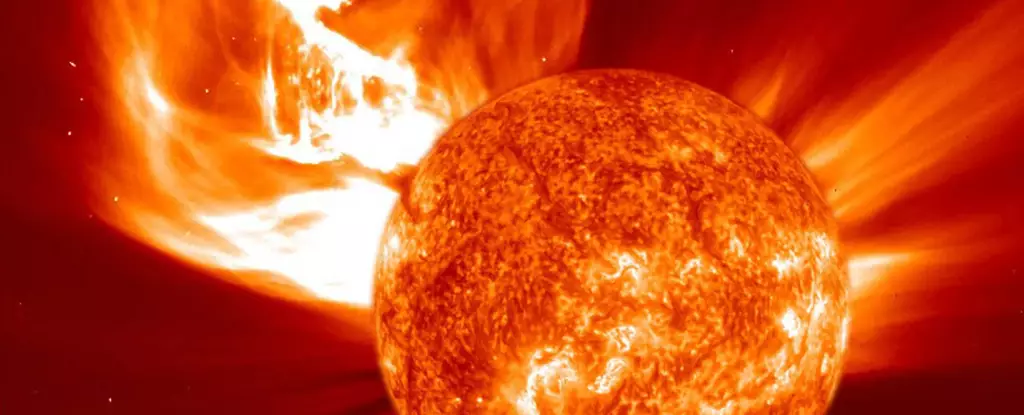In recent months, the dynamics of space exploration have faced a striking challenge. The Binar Space Program, part of Curtin University, launched three miniature satellites, nicknamed Binar-2, Binar-3, and Binar-4, into low Earth orbit. Unfortunately, these CubeSats met an early fate as they succumbed to the intense solar activity that has characterized recent months. While it was no surprise that these satellites would eventually burn up upon re-entry into Earth’s atmosphere, their operational lifespan fell drastically short of expectations, lasting only two months instead of the anticipated six. This incident raises critical concerns regarding the impact of solar phenomena on satellite longevity and the continual advancement of space exploration technology.
The Intricacies of Low Earth Orbit and Solar Influence
Satellites positioned in low Earth orbit (LEO), defined as being within 2,000 kilometers of the Earth’s surface, are particularly vulnerable to the forces of orbital decay. Although these satellites are designed with certain fail-safes, they are at the mercy of external environmental conditions—especially solar activity. The unique term “Binar,” translating to “fireball” in the Noongar language, serves as a metaphor for both the satellite mission’s ambitious foundation and its unfortunate conclusion. In the case of Binar-2, 3, and 4, these CubeSats faced an early demise attributed to an unexpected uptick in solar activity that has taken many satellite operators by surprise.
High solar activity encompasses phenomena like sunspots, solar flares, and an accelerated solar wind, all rooted in the complex dynamics of the Sun’s magnetic field. Solar cycles, occurring every 11 years, dictate changes in solar behavior; currently, we are experiencing solar cycle 25. Unfortunately, while scientists can predict the occurrence of these cycles, the specific manifestations are challenging to forecast. The Binar satellites’ misfortune aligns with a larger trend affecting many missions, as recent solar activity has exceeded predictions by an alarming 150%, posing serious implications for satellites orbiting at low altitudes.
Space weather describes the environment created by solar phenomena, influencing our planet in both overt and subtle ways. One of the most enchanting manifestations of this activity is auroras, which have recently been observed reaching far closer to the equator than ever before. However, the repercussions extend far beyond striking visual displays; satellites endure significant operational challenges as solar activity intensifies.
When solar flares and heightened solar winds occur, an influx of charged particles engulfs satellites and can endanger their electronic systems. Moreover, such conditions elevate the risks for astronauts and pilots by increasing exposure to ionizing radiation. For satellites within low Earth orbit, excess energy resulting from solar activity heats the upper atmosphere, causing it to expand. Consequently, this expansion increases atmospheric drag, prompting satellites to lose their altitude steadily.
For satellites like the Binar CubeSats, which lack onboard thrusters for altitude adjustment, this atmospheric drag poses a jeopardy. Their mission duration can be dramatically lessened when subjected to unexpected solar circumstances. Contrast this with sizable satellites, like the International Space Station, which are equipped with thrusters but still face significant operational costs due to the necessary adjustments required during heightened space weather conditions.
The Binar Space Program, initiated in September 2021 with its first satellite, Binar-1, initially operated under more stable solar conditions, thriving for an impressive 364 days in orbit. However, the subsequent launch of Binar-2, 3, and 4 was met with unforeseen challenges, resulting in a premature end to their scientific work and technology testing. While the CubeSats were relatively inexpensive to develop, the abrupt termination of their missions can be considered costly in terms of lost research opportunities.
Yet, this episode serves as more than a cautionary tale. It underscores the crucial need for improved forecasting in space weather to better prepare satellite operators for fluctuations in solar activity. Despite the setbacks faced with the Binar satellites, the program remains resolute and is now focusing on future missions, which are expected to contend with more favorable space conditions. As the solar cycle progresses, with indications suggesting a decline expected by 2026, the potential for future success grows.
While the unfortunate early end of the Binar-2, 3, and 4 missions offers valuable lessons concerning solar influences and satellite design, it also reinforces the commitment to advancing space exploration. In the rapidly evolving realm of technology, a greater understanding of external environmental factors will be key to enhancing the longevity and success of future missions.


Leave a Reply